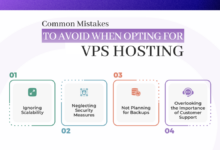The Ultimate Guide to Managed vs Unmanaged VPS Hosting
The Ultimate Guide to Managed vs Unmanaged VPS Hosting sets the stage for a comprehensive exploration of virtual private server hosting options. This guide will delve into the key differences between managed and unmanaged VPS plans, examining factors such as cost, performance, security, scalability, and technical expertise required. Whether you’re a seasoned developer or a business owner seeking a reliable hosting solution, understanding these distinctions is crucial for making an informed decision that aligns with your specific needs and resources.
We’ll navigate the complexities of VPS hosting, comparing the hands-off convenience of managed services with the granular control offered by unmanaged options. Through clear explanations, practical examples, and insightful comparisons, this guide aims to empower you with the knowledge necessary to choose the ideal VPS hosting solution for your project.
Introduction to VPS Hosting
Virtual Private Server (VPS) hosting represents a powerful middle ground in web hosting solutions, offering a balance between affordability and control. It provides users with a dedicated portion of a physical server’s resources, creating a virtual environment that functions independently from other users on the same server. This contrasts sharply with shared hosting, where multiple websites share the same server resources, and dedicated servers, where a user has exclusive access to an entire physical machine. Understanding these distinctions is crucial in selecting the optimal hosting solution for your needs.
VPS hosting essentially virtualizes a physical server, dividing it into multiple independent virtual servers. Each virtual server, or VPS, acts like its own dedicated server, with its own operating system, resources (RAM, CPU, storage), and administrative privileges. This allows for greater control and customization compared to shared hosting while remaining more cost-effective than a dedicated server.
VPS Hosting Compared to Other Options
Shared hosting, dedicated servers, and VPS hosting offer distinct advantages and disadvantages. Shared hosting, the most economical option, is suitable for small websites with low traffic volume. However, resource limitations and shared security concerns can hinder performance and security. Conversely, dedicated servers provide complete control and superior performance but come at a significantly higher cost. They are ideal for large, high-traffic websites demanding maximum resources and security. VPS hosting bridges this gap, offering a balance of control, performance, and cost-effectiveness. It is suitable for websites requiring more resources and control than shared hosting but don’t need the expense of a dedicated server.
Analogy for VPS Virtualization
Imagine a large apartment building. Shared hosting is like renting a single room; you share common areas and resources with many other tenants. A dedicated server is like owning the entire building; you have complete control and privacy. VPS hosting is akin to renting an entire apartment within the building; you have your own private space and resources, separate from other tenants, but you share the building’s infrastructure. This analogy illustrates how VPS hosting offers a degree of independence and control similar to a dedicated server, but at a fraction of the cost.
Managed VPS Hosting Explained
Managed VPS hosting provides a middle ground between the complete control of an unmanaged VPS and the simplicity of shared hosting. It offers the power and flexibility of a virtual private server with the added benefit of professional management and support. This means you get the performance benefits of a VPS without the burden of server administration tasks.
Managed VPS hosting packages typically include a comprehensive suite of services designed to simplify server management and optimize performance. This allows users to focus on their applications and business rather than server maintenance.
Services Included in Managed VPS Hosting
Managed VPS providers typically handle a significant portion of server administration, freeing up your time and resources. Commonly included services often encompass server setup, operating system updates, security patching, and basic server monitoring. Many providers also offer proactive monitoring, alerting you to potential issues before they impact your website or application. Some may even include features like automated backups and content delivery network (CDN) integration. The specific services offered will vary depending on the provider and the chosen plan.
Technical Support in Managed VPS Hosting
A key differentiator of managed VPS hosting is the level of technical support provided. Unlike unmanaged VPS, where you’re responsible for troubleshooting and resolving technical issues, managed providers offer varying levels of support, ranging from basic email or ticketing systems to 24/7 phone support with dedicated engineers. This support often extends to assistance with server configuration, software installation, and performance optimization. The responsiveness and expertise of the support team are crucial factors to consider when choosing a provider. Higher-tier plans typically offer prioritized support with faster response times and more direct access to experienced engineers.
Comparison of Managed VPS Plans
The features and pricing of managed VPS plans vary significantly across providers. Below is a sample comparison table illustrating potential differences. Remember that these are examples and actual offerings will differ depending on the provider and the specific plan.
| Plan Name | RAM | Storage | Bandwidth | Support Level | Price/Month (USD) |
|---|---|---|---|---|---|
| Basic | 2 GB | 50 GB SSD | 1 TB | Email Support | $20 |
| Standard | 4 GB | 100 GB SSD | 2 TB | 24/7 Email & Chat Support | $40 |
| Premium | 8 GB | 200 GB SSD | 5 TB | 24/7 Phone, Email & Chat Support with Priority Access | $80 |
| Enterprise | 16 GB | 500 GB SSD | 10 TB | Dedicated Account Manager & 24/7 Premium Support | $150 |
Unmanaged VPS Hosting Explained
Unmanaged VPS hosting offers a high degree of control and flexibility, but it comes with the responsibility of managing the server entirely. Unlike managed hosting, where the provider handles most technical aspects, unmanaged VPS hosting places the onus of server administration squarely on the user. This approach is ideal for users with strong technical skills and a desire for granular control over their server environment.
Choosing unmanaged VPS hosting means you are responsible for every aspect of the server’s operation, from initial setup and configuration to ongoing maintenance and security. This includes tasks typically handled by a hosting provider in a managed environment. This level of responsibility allows for significant customization and optimization, but also demands a corresponding level of expertise.
Responsibilities of Users with Unmanaged VPS Hosting
Users of unmanaged VPS hosting assume complete responsibility for the server’s health, security, and performance. This includes a wide range of tasks, from initial server setup to ongoing maintenance and security updates. A lack of proactive management can lead to downtime, security vulnerabilities, and performance issues. Understanding these responsibilities is crucial before opting for this type of hosting.
Technical Skills Required for Effective Unmanaged VPS Management
Successfully managing an unmanaged VPS requires a solid understanding of server administration and related technologies. Proficiency in these areas is essential to prevent issues and ensure optimal performance. Users lacking these skills may find unmanaged VPS hosting challenging and potentially frustrating.
- Operating System Proficiency: A deep understanding of Linux (most common for VPS) or Windows Server administration, including user management, file system manipulation, and process control.
- Networking Knowledge: Familiarity with networking concepts like IP addressing, DNS configuration, firewalls, and network security protocols.
- Server Security Expertise: Ability to implement and maintain robust security measures, including regular security updates, firewall configurations, and intrusion detection/prevention systems. This includes understanding common vulnerabilities and mitigation strategies.
- Database Administration: If your application uses a database (MySQL, PostgreSQL, etc.), you’ll need to manage its installation, configuration, backups, and performance optimization.
- Web Server Configuration: Knowledge of configuring web servers like Apache or Nginx, including virtual hosting, SSL certificates, and performance tuning.
- Command-Line Interface (CLI) Proficiency: Comfortable working with the command line interface for managing server tasks efficiently.
Examples of Tasks Handled in Unmanaged Environments
The following examples illustrate the diverse range of tasks a user must handle with an unmanaged VPS. These tasks highlight the significant technical expertise required for successful operation.
- Installing and Configuring the Operating System: This involves choosing a suitable OS distribution, partitioning the hard drive, and installing necessary software packages.
- Setting up and Managing User Accounts: Creating and managing user accounts with appropriate permissions and access levels.
- Installing and Configuring Web Server Software: Choosing and installing a web server (Apache, Nginx), configuring virtual hosts, and setting up SSL certificates.
- Installing and Configuring Databases: Installing and configuring database software (MySQL, PostgreSQL), creating databases, and managing user access.
- Implementing Security Measures: Setting up firewalls, installing intrusion detection systems, regularly updating software, and implementing strong password policies.
- Performing Regular Backups: Creating regular backups of the server’s data to protect against data loss.
- Monitoring Server Performance: Regularly monitoring server performance metrics (CPU usage, memory usage, disk space) to identify and address potential problems.
- Troubleshooting and Problem Solving: Diagnosing and resolving server issues, such as application errors, network connectivity problems, and security breaches.
Cost Comparison
Choosing between managed and unmanaged VPS hosting often comes down to budget. While the upfront cost of unmanaged VPS might seem appealing, a thorough cost comparison considering both immediate and long-term expenses is crucial for making an informed decision. This section details the pricing models of each option and highlights potential hidden costs that can significantly impact your overall expenditure.
The pricing models for managed and unmanaged VPS plans differ significantly. Unmanaged VPS providers typically offer a straightforward pricing structure based on resources like RAM, storage, and bandwidth. You pay a fixed monthly fee for these allocated resources. Managed VPS, however, often incorporates a tiered pricing system, with costs varying based on the level of support and management services included. Higher tiers generally offer more comprehensive support and proactive monitoring, resulting in a higher monthly fee.
Pricing Models and Long-Term Costs
Unmanaged VPS hosting usually presents a lower initial cost. The monthly fee covers the basic resources, but you’re responsible for all other aspects, including operating system maintenance, security updates, and server management. This can lead to unforeseen expenses if you lack the technical expertise or hire external assistance. For instance, if a server requires significant troubleshooting, the cost of hiring a system administrator could quickly offset any initial savings. Conversely, managed VPS hosting incorporates these services into the monthly fee, offering a predictable and potentially more cost-effective solution in the long run, particularly for users lacking technical skills. However, the higher monthly cost can initially seem daunting.
Hidden Fees
Both managed and unmanaged VPS plans can have hidden fees. Unmanaged plans might charge extra for bandwidth exceeding a certain limit, backups, or specific software installations. Managed plans may charge extra for advanced support features, such as priority response times or specialized technical assistance. It is crucial to thoroughly review the service level agreement (SLA) and pricing details before committing to either option.
Sample Cost Comparison
The following table provides a sample cost comparison, illustrating potential differences between managed and unmanaged VPS plans. Remember that actual prices vary greatly depending on the provider, location, and specific resources required. This example should be viewed as a general representation, not a precise reflection of market pricing.
| Feature | Unmanaged VPS (Example) | Managed VPS (Example) | Notes |
|---|---|---|---|
| Monthly Base Price | $20 | $50 | Significant initial cost difference |
| RAM | 2 GB | 4 GB | Managed plans often include more resources |
| Storage | 50 GB SSD | 100 GB SSD | Higher storage often included in managed plans |
| Bandwidth | 1 TB | 2 TB | Higher bandwidth limits are common in managed plans |
| Operating System Maintenance | $0 (self-managed) | Included | Significant cost savings with managed services |
| Security Updates | $0 (self-managed) | Included | Proactive security updates are a key benefit of managed plans |
| Server Monitoring | $0 (self-managed) | Included | 24/7 monitoring reduces downtime risks |
| Technical Support | Variable (potentially costly) | Included | Support costs can be substantial for unmanaged plans |
| Estimated Total Monthly Cost (Year 1) | $20 + potential additional costs | $50 | Long-term costs can vary significantly depending on the level of technical support required |
Performance and Security
Choosing between managed and unmanaged VPS hosting significantly impacts both the performance and security of your server. Managed providers handle many aspects of server maintenance and security, offering a more streamlined experience but potentially at a higher cost. Unmanaged VPS hosting, conversely, provides greater control but demands more technical expertise from the user to maintain performance and security.
The performance differences stem primarily from the level of proactive management. Managed providers often employ optimized configurations, regular updates, and performance monitoring tools, resulting in consistently better uptime and faster response times. Unmanaged servers, while potentially equally powerful, rely entirely on the user to implement these optimizations and address performance bottlenecks. This can lead to periods of slower performance or even downtime if the user lacks the necessary skills or time.
Performance Characteristics Comparison
Managed VPS environments typically boast superior performance due to the proactive management by the hosting provider. They often utilize advanced techniques like caching, load balancing, and server optimization strategies that are beyond the scope of most individual users. This results in faster page load times, improved application responsiveness, and higher overall system stability. Conversely, unmanaged VPS performance is directly correlated with the user’s technical expertise and proactive maintenance. Neglecting essential tasks such as software updates, security patching, and resource optimization can lead to significant performance degradation. A poorly configured or maintained unmanaged VPS might experience slowdowns, crashes, and ultimately, a diminished user experience. For example, a website hosted on a poorly managed unmanaged VPS might experience significantly longer loading times, impacting SEO and user engagement. A managed VPS, on the other hand, would typically have safeguards in place to prevent such issues.
Managed VPS Security Measures
Managed hosting providers typically implement robust security measures to protect their clients’ servers. These often include: regular security patching and updates for the operating system and applications; intrusion detection and prevention systems (IDPS) to monitor for and block malicious activity; firewalls to control network traffic and prevent unauthorized access; regular backups to ensure data recovery in case of a failure or attack; and proactive security monitoring by trained personnel. Many managed providers also offer additional security features such as DDoS protection and SSL certificates, enhancing the overall security posture of the server. For instance, a managed provider might proactively detect and mitigate a DDoS attack before it significantly impacts the website’s availability, something that would require significant technical expertise and resources for an unmanaged VPS user to handle effectively.
Unmanaged VPS Security Responsibilities
With unmanaged VPS hosting, the responsibility for security falls entirely on the user. This requires a comprehensive understanding of server security best practices, including: regularly updating the operating system and all installed software; configuring a robust firewall to control network access; implementing strong passwords and access controls; installing and maintaining an intrusion detection system; regularly backing up data; and staying informed about emerging security threats. Failure to adequately address these security responsibilities can lead to significant vulnerabilities, exposing the server to malware, hacking attempts, data breaches, and ultimately, significant financial and reputational damage. For example, neglecting to update the server’s operating system could leave it vulnerable to known exploits, potentially allowing malicious actors to gain unauthorized access and compromise sensitive data.
Scalability and Flexibility
Choosing between managed and unmanaged VPS hosting often hinges on your needs regarding scalability and flexibility. Both options offer the ability to adjust resources, but the process and ease of doing so differ significantly. Understanding these differences is crucial for selecting the hosting solution that best aligns with your project’s growth trajectory and technical capabilities.
Both managed and unmanaged VPS hosting offer scalability, but the approach and level of control differ considerably. Unmanaged VPS hosting provides maximum flexibility, allowing for granular control over resource allocation and system customization, while managed VPS hosting prioritizes ease of use and streamlined scaling through pre-defined options and provider support.
Scalability Options
Managed VPS providers typically offer predefined scaling options. You might choose from a set of predefined resource packages (e.g., more RAM, more CPU cores, increased storage), often requiring a simple upgrade request through their control panel or support ticket. The provider handles the technical aspects of the upgrade, minimizing downtime and ensuring a smooth transition. In contrast, unmanaged VPS hosting offers a more hands-on approach. Scaling involves manually adjusting resources through the server’s control panel or command line. This requires a deeper understanding of server administration and may involve more downtime as you perform the upgrades yourself. For example, increasing RAM on an unmanaged server might involve editing configuration files, rebooting the server, and verifying the changes.
Flexibility in Resource Allocation and Customization
Unmanaged VPS hosting provides unparalleled flexibility. You have complete control over the operating system, software installations, and resource allocation. This allows for highly customized configurations tailored to specific application needs. You can install any software you need, optimize the system for performance, and manage every aspect of the server’s operation. Managed VPS hosting, while offering less control, provides a simplified experience. The provider handles many of the underlying tasks, such as OS updates, security patching, and basic resource management. Customization is limited to the options provided by the provider. For instance, while you might be able to choose your preferred control panel, you might not have the freedom to install a specific, less common database system.
Scenarios Favoring Managed vs. Unmanaged VPS
A rapidly growing e-commerce platform anticipating significant traffic spikes might benefit from managed VPS hosting. The ease of scaling resources and the provider’s expertise in handling performance optimization minimize disruption during periods of high demand. On the other hand, a developer building a custom application requiring specific software configurations and low-level system control would likely prefer an unmanaged VPS. The complete control and flexibility outweigh the added administrative overhead. For example, a company developing a high-performance computing application requiring specific libraries and kernel configurations would benefit from the granular control offered by an unmanaged VPS. Conversely, a small business launching a simple website with predictable traffic would likely find managed VPS hosting more cost-effective and easier to manage.
Choosing the Right Option
Selecting between managed and unmanaged VPS hosting requires careful consideration of several key factors. The optimal choice depends heavily on your technical skills, budget, and the specific needs of your project. A thorough evaluation will ensure you choose the solution that best aligns with your resources and long-term goals.
Factors Influencing the Choice Between Managed and Unmanaged VPS Hosting
The decision between managed and unmanaged VPS hosting hinges on several crucial aspects. Understanding these factors will allow you to make an informed decision that best suits your technical capabilities and project requirements.
- Technical Expertise: Your level of technical proficiency plays a significant role. Unmanaged VPS requires considerable technical expertise for server administration, security updates, and troubleshooting. Managed VPS, conversely, handles these tasks for you.
- Budget: Managed VPS typically costs more due to the included support and management services. Unmanaged VPS offers a lower initial investment, but you must factor in the potential costs of hiring technical support or acquiring the necessary skills yourself.
- Time Commitment: Managing a server demands significant time and effort. Unmanaged VPS necessitates dedicated time for maintenance, updates, and problem-solving. Managed VPS frees up your time, allowing you to focus on your core business activities.
- Specific Needs and Applications: Certain applications may require specific configurations or specialized software. The level of customization needed might influence your choice. For instance, a complex application might benefit from the control offered by an unmanaged VPS, while a simpler website might thrive with the ease of a managed solution.
- Scalability Requirements: Both managed and unmanaged VPS offer scalability, but the ease and speed of scaling can vary. Managed providers often streamline the scaling process, while unmanaged VPS might require more manual intervention.
- Security Concerns: Security is paramount. Managed providers typically include robust security measures, regular updates, and proactive monitoring. With unmanaged VPS, you are solely responsible for implementing and maintaining security protocols.
The Impact of Technical Expertise
Technical expertise is a pivotal factor when choosing between managed and unmanaged VPS hosting. Individuals with strong technical skills, including experience with server administration, operating systems, security protocols, and networking, are well-suited to manage an unmanaged VPS. They can handle tasks such as server maintenance, security updates, and troubleshooting independently, often at a lower cost.
Conversely, individuals lacking these skills will find a managed VPS more beneficial. Managed providers handle the technical aspects, eliminating the need for specialized knowledge and reducing the risk of errors. This simplifies server management and allows users to focus on their applications and business objectives. For example, a small business owner with limited technical expertise would likely find a managed VPS significantly easier to operate and maintain than an unmanaged one, even if the initial cost is higher. The time saved and reduced risk of errors often outweigh the additional expense.
Real-World Examples and Case Studies
Understanding the practical applications of managed and unmanaged VPS hosting is crucial for making informed decisions. The best choice depends heavily on technical expertise, budget, and the specific needs of your project. Let’s examine scenarios where each type shines.
Managed VPS Hosting: E-commerce Platform for a Small Business
A small online retailer, “Artisan Goods,” is launching its e-commerce website. They lack in-house IT expertise but require a reliable and secure platform to handle customer orders, payments, and inventory management. A managed VPS provides a perfect solution. The hosting provider handles server maintenance, security updates, and backups, allowing Artisan Goods to focus on growing their business. The benefits include reduced operational overhead, enhanced security, and guaranteed uptime. However, the drawback is the higher cost compared to unmanaged VPS hosting. If a critical security issue arises, the managed provider’s response time is a key factor to consider.
Unmanaged VPS Hosting: Experienced Developer Launching a Personal Project
An experienced software developer, John, is launching a personal project – a new social media platform. John possesses extensive technical skills and is comfortable managing server administration tasks. An unmanaged VPS offers him complete control over the server environment, allowing for customization and optimization to meet the specific needs of his application. The cost-effectiveness is a major advantage. However, John must dedicate time and resources to server maintenance, security patching, and troubleshooting, which may detract from his development efforts. Any downtime resulting from misconfiguration or security breaches falls solely on John.
Managed VPS Hosting: Large Enterprise Deploying a Mission-Critical Application
A large financial institution, “Global Finance,” is deploying a new trading platform. This application requires high availability, stringent security measures, and 24/7 monitoring. A managed VPS, with its robust support and service level agreements (SLAs), provides the necessary reliability and security. The institution benefits from guaranteed uptime, proactive monitoring, and expert support, minimizing the risk of downtime and ensuring data security. The high cost is offset by the reduced risk and increased efficiency. The SLA guarantees a specific level of uptime and response time for support requests.
Unmanaged VPS Hosting: Experienced System Administrator Managing a Network of Servers
A seasoned system administrator, Sarah, manages a network of servers for a large university. Sarah and her team have the expertise to handle all aspects of server administration, including security, maintenance, and performance optimization. Unmanaged VPS hosting offers them the flexibility and control they need to manage a complex server infrastructure efficiently. The cost savings compared to managed hosting are significant, and the complete control allows for precise customization. However, the responsibility for all server-related tasks rests solely with Sarah and her team, demanding considerable technical expertise and resources. This requires significant planning for potential failures and appropriate failover mechanisms.
Technical Specifications and Resource Allocation
Understanding the technical specifications and resource allocation methods is crucial when choosing between managed and unmanaged VPS hosting. These factors directly impact performance, cost, and the overall manageability of your server. This section will delve into the typical hardware configurations and resource management approaches employed by each hosting type.
Hardware Specifications
Managed and unmanaged VPS providers offer a range of hardware configurations tailored to different needs and budgets. Typical specifications include CPU cores, RAM capacity, and storage space (SSD or HDD). While the specific offerings vary widely depending on the provider and pricing tier, general trends can be observed. Managed VPS providers often offer a more standardized set of options, focusing on ease of use and predictable performance. Unmanaged VPS providers, conversely, often present a wider array of customization options, allowing users to select precise hardware configurations to meet their specific technical requirements. For instance, a managed provider might offer packages with 2, 4, or 8 CPU cores, 4GB, 8GB, or 16GB of RAM, and 50GB, 100GB, or 200GB of SSD storage. An unmanaged provider, however, might allow you to select the exact number of cores, RAM amount, and storage capacity within a broader range of possibilities.
Resource Allocation Methods
Managed VPS providers typically utilize virtualization technologies like KVM or Xen to allocate resources. These technologies create isolated virtual environments, ensuring each VPS has dedicated resources, even if the underlying physical hardware is shared. Resource allocation is usually automated, simplifying management and ensuring consistent performance. Unmanaged VPS providers also employ virtualization, but often provide less automated management. Users typically have more control over resource allocation, requiring a deeper understanding of server administration. This greater control allows for fine-tuning performance for specific applications but demands more technical expertise. For example, a managed provider might automatically allocate CPU cycles and RAM based on the VPS’s current needs, while an unmanaged provider would likely require manual configuration of resource limits using tools like cPanel or command-line interfaces.
Resource Allocation’s Impact on Performance and Cost
The method of resource allocation significantly influences both performance and cost. With managed VPS hosting, the automated allocation ensures consistent performance, even during peak loads. However, this convenience often comes at a higher cost due to the added management overhead. Unmanaged VPS hosting, with its manual resource allocation, offers greater control and potential for cost optimization. However, this requires technical expertise and careful planning to avoid performance bottlenecks. For example, if a website experiences a sudden surge in traffic, a managed VPS might automatically allocate additional resources to handle the load, ensuring consistent performance but incurring higher costs. An unmanaged VPS, on the other hand, might require manual intervention to scale resources, potentially leading to performance degradation if not managed properly, but offering the potential for lower overall costs if managed effectively.
Last Point
Ultimately, the choice between managed and unmanaged VPS hosting hinges on a careful assessment of your technical skills, budget, and long-term goals. While managed VPS offers simplicity and peace of mind, unmanaged VPS provides greater control and flexibility at the cost of increased technical responsibility. By weighing the pros and cons outlined in this guide, you can confidently select the hosting solution that best supports your project’s success and aligns with your individual capabilities and priorities. We hope this Ultimate Guide has equipped you with the necessary knowledge to make a well-informed decision.









